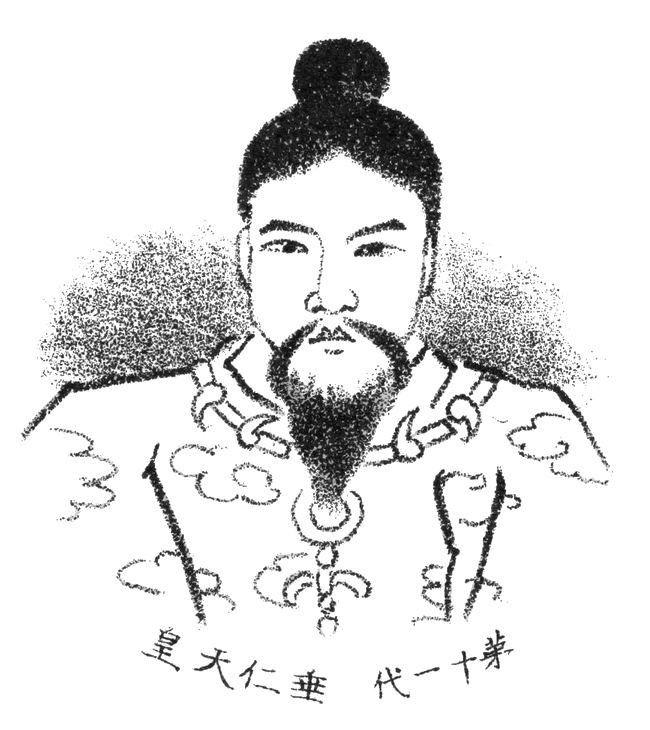Predecessor Sujin Parents Emperor Sujin Children Yamatohime-no-mikoto | Died 70 AD Successor Emperor Keikō | |
 | ||
Reign 29 BC – 70 (traditional) Burial Sugawara no Fushimi no higashi no misasagi (Nara) Similar | ||
Tragedy of emperor suinin and his wife from kojiki
Emperor Suinin (垂仁天皇, Suinin-tennō); also known as Ikumeiribikoisachi no Mikoto; was the 11th emperor of Japan, according to the traditional order of succession.
Contents
- Tragedy of emperor suinin and his wife from kojiki
- Legendary narrative
- Consorts and children
- References
No firm dates can be assigned to this emperor's life or reign, but he is conventionally considered to have reigned from 29 BC to AD 70.
Legendary narrative
Suinin is regarded by historians as a "legendary emperor" and there is a paucity of information about him. There is insufficient material available for further verification and study. The reign of Emperor Kinmei (c. 509 – 571 AD), the 29th emperor, is the first for which contemporary historiography is able to assign verifiable dates; however, the conventionally accepted names and dates of the early emperors were not to be confirmed as "traditional" until the reign of Emperor Kanmu (737–806), the 50th sovereign of the Yamato dynasty. The name Suinin-tennō was assigned to him posthumously by later generations.
Legend says that about two thousand years ago, Emperor Suinin ordered his daughter, Princess Yamatohime-no-mikoto, to set out and find a suitable permanent location from which to hold ceremonies for Amaterasu-ōmikami, the Sun Goddess. After twenty years of searching, she is said to have settled on the area of Ise, establishing the Ise Shrine. According to Asama Shrine tradition, the earliest veneration of Konohanasakuya-hime at the base of Mount Fuji was in the 8th month of the 3rd year of the reign of Emperor Suinin.
Nihonshoki records the wrestling match in which Nomi no Sukune and Taima no Kehaya held during his era, as the origin of Sumai (Sumo wrestling). In the context of events like this, the Japanese have traditionally accepted this sovereign's historical existence; however, no extant contemporary records have been discovered which confirm a view that this historical figure actually reigned.
Jien records that Tehiede Tuhōyō was the third son of Emperor Sujin, and that he ruled from the palace of Tamaki-no-miya at Makimuku in what will come to be known as Yamato Province. Jien also explains that during the reign of Emperor Suinin, the first High Priestess (Saiō, also known as saigū) was appointed for Ise Shrine in what would become known as Ise Province.
Suinin is a posthumous name. It is undisputed that this identification is Chinese in form and Buddhist in implication, which suggests that the name must have been regularized centuries after the lifetime ascribed to Suinin, possibly during the time in which legends about the origins of the Yamato dynasty were compiled as the chronicles known today as the Kojiki.
The legend of Kaguya-hime seems to found its basis in Suinin's story with Kaguya-him-no-Mikoto, one of his consorts, according to Kojiki.
The actual site of Suinin's grave is not known. This emperor is traditionally venerated at a memorial Shinto shrine (misasagi) at Nara.
The Imperial Household Agency designates this location as Suinin's mausoleum. It is formally named Sugawara no Fushimi no higashi no misasagi.
Suinin's tomb can be visited in Nishi-machi, Amagatsuji, Nara City. This kofun-type Imperial tomb is characterized by a keyhole-shaped island located within a wide, water-filled moat.
Consorts and children
Empress(first): Sahohime (狭穂姫命), daughter of Hikoimasu (彦坐王)
Empress(second): Hibasuhime (日葉酢媛命), daughter of Tanba no Michinoushi (丹波道主王)
Nubataniirihime (渟葉田瓊入媛), younger sister of Hibasuhime
Matonohime (真砥野媛), younger sister of Hibasuhime
Azaminiirihime (薊瓊入媛), younger sister of Hibasuhime
Kaguyahime (迦具夜比売), daughter of Ootsutsukitarine (大筒木垂根王)
Kanihatatobe (綺戸辺), daughter of Yamashiro no Ookuni no Fuchi (山背大国不遅)
Karihatatobe (苅幡戸辺), older sister of Kanihatatobe
unknown
